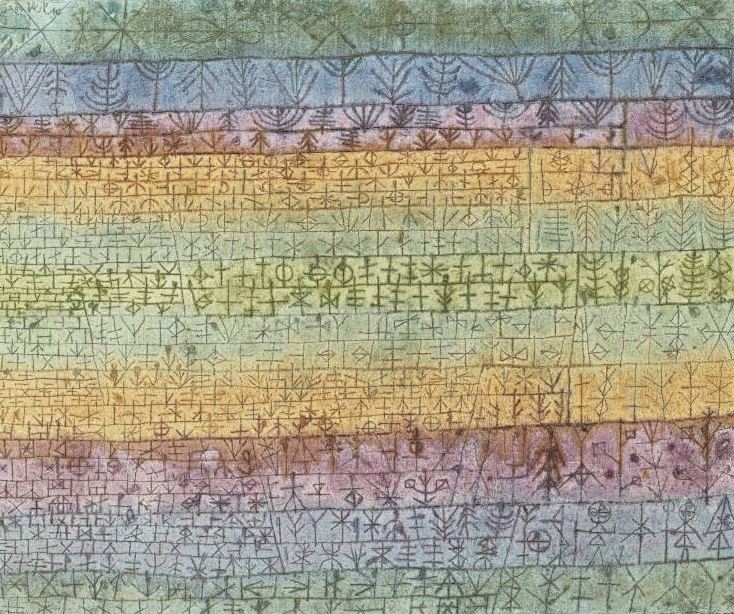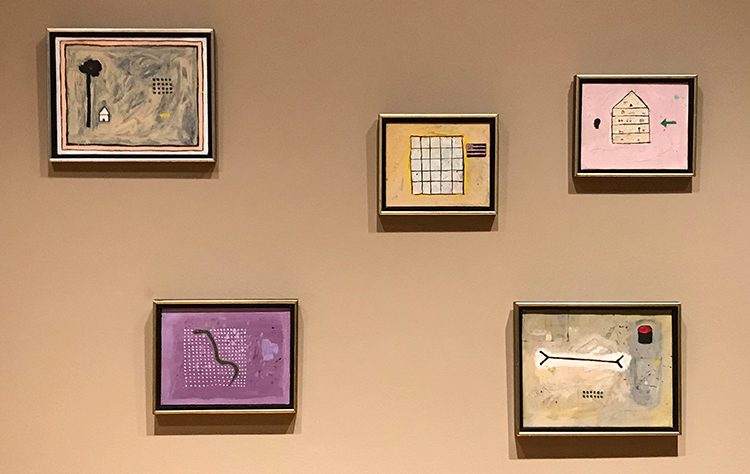
Paul Klee, Tree Nursery, 1929, Oil with incised gesso ground on canvas, 17 1/4 x 20 5/8 in. The Phillips Collection, Acquired 1930
Duncan Phillips was a stalwart champion of Paul Klee, and had his works on constant view over several decades in what became known as “The Klee Room” at the Phillips. In 1971, art critic Barbara Rose wrote about the influence of “The Klee Room” in DC in her essay “Retrospective Notes on the Washington School” in The Vincent Melzac Collection: Modernist American Art Featuring New York Expressionism and Washington Color Painting:
“[Kenneth] Noland was not the only Washington painter to look closely at Klee. Klee played the role in Washington that Kandinsky played in New York, which made for crucial differences in approach and emphasis. As opposed to Kandinsky’s expressionist romanticism, Klee’s experiments with surface and texture, his early use of banding, central images, and geometric motifs, provided important precedents for the kind of technique and imagery eventually developed in Washington. Klee was accessible in Washington as Kandinsky was accessible in New York because of the taste of a local collector. As Solomon Guggenheim had assembled a great collection of Kandinsky’s works in his New York museum, so Duncan Phillips put together a remarkable collection of Klee’s works. No one who has ever lived in Washington (this writer included) can ever forget the impact of the Klee room at the Phillips Gallery.”
This work is on view in Ten Americans: After Paul Klee through May 6, 2018.


